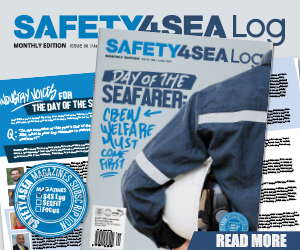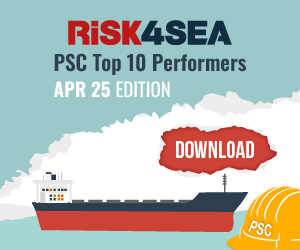2024 saw the continuing evolution and widening of available maritime fuel types and grades,as the global shipping industry continues to gather decarbonisation momentum to reduce itsemissions to meet current and future legislation targets, argues Steve Bee, VPS Group Commercial Director.
Existing CII and EEXI requirements,plus EU ETS legislation, saw increasing demand for additional testing, lower-carbon fuels, dataand digitalisation solutions across the shipping sectors. As the leading maritime decarbonisation testing and advisory services provider, VPScontinued to be at the forefront of marine fuels and lubricants analysis, utilising ourexperience, expertise and innovative approach, to support the drive for a more sustainableshipping fleet.
Throughout the year, VPS witnessed further fuel quality issues with VLSFOs in terms of,sulphur compliance, cold-flow properties, water and cat-fines. In addition, MGO suffered fromcold-flow, flash point and FAME off-specifications.
Biofuels usage saw a continuing increase in demand from the market, leading to increasingqueries regarding their fuel management and their “fit-for-purpose” as a drop-in marine fuel.
The launch of the new revision of the international marine fuel quality standard ISO8217:2024was very much welcomed by the industry. This new revision saw the specification tablesincrease from two to four, with the inclusion of a <0.50% Sulphur specification and alsobiofuels in the form of FAME, HVO, GTL and/or, BTL.
2024 witnessed very strong newbuild contracting (2,765 ships of 124.2m GT), the highest intonnage terms since 2007 (173.4m GT). With 820 of these vessels being “alternative fuelcapable”, showing the fuelling transition is still very much in focus.
The Marine Fuel Mix
Across 2024, the fuel mix with respect to samples received for testing in VPS laboratories,equated to more than 65 million MT, which averages at 5.4 million MT of marine fuels permonth. VLSFO was the most popular marine fuel with 52% of the fuels used, followed by 32%HSFO, 14% MGO, 1% ULSFO and 1% Biofuels.
Regarding biofuels usage, the samples tested by VPS equated to an increase from 558,000 MT in 2023 to 800,000MT in 2024.
VLSFO Fuel Quality
As the most used marine fuel type, VLSFO accounts for more than half of the fuels tested byVPS. In terms of quality, VLSFO had an off-specification rate of 5.4% in 2024. Of the 5.4%VLSFO off-specifications, Europe provided the highest level of off-specification VLSFOs inboth 2024 (11.9%) and 2023 (7.9%).
North America provided the next highest level of off-specification VLSFO with 7% of fuels tested exhibiting at least one off-specificationparameter in 2024 and 4.4% in 2023. South America had the third highest VLSFO off-specification rate with 5.9% off-specs versus 3.8% in 2023.
Sulphur is the most common off-specification parameter of VLSFOs, accounting for 44% of VLSFO off-specs in 2024 and 28% in 2023. When it comes to looking at all VLSFOs tested, 0.5% had a sulphur content >0.53%, whilst 1.9% of samples tested were between 0.50%-0.53% sulphur and the remaining 97.6% had a sulphur content of <0.50%.
Pour Point was also a common off-specification parameter for VLSFOs with 13% of VLSFOsoff-specs relating to this parameter, a decrease against the 16% level witnessed in 2023. The importance of the additional cold-flow test of Wax Appearance Temperature (WAT) andWax Disappearance Temperature (WDT), was further highlighted in 2024 with 57% of VLSFOsexhibiting WAT of 31-40ºC and 11% having WAT between 41-50ºC. 54% of VLSFO samples hada WDT of 41-50ºC, with 20% having a WDT of >50ºC.
VLSFOs cold-flow properties are adefinite concern with wax precipitating from the fuel at temperatures way in excess of 10ºCabove the pour point, potentially causing numerous operational problems such as filter andpipework blockages.
2024 saw a very similar distribution of cat-fines results across all VLSFOs tested compared to 2023, with only 0.6% of samples showing cat-fine levels of greater than 60ppm and hence off- specification. 19% of all VLSFOs showed a cat-fine level greater than 40ppm. Frequent checking of purifier efficiency via VPS’ Fuel System Checks (FSC) service is a highly recommended proactive safeguard in respect to increased cat-fines within VLSFOs.
HSFO Fuel Quality
HSFO represents almost 32% of all bunker samples received by VPS for testing, indicating arelatively high level of scrubber usage onboard vessels today. 10.4% of HSFOs tested in 2024were off-specification for at least one test parameter.
In terms of regional HSFO off-specifications, South America accounted for 29% of off-specs, compared to 30.5% in 2023. Second highest off-spec region was Europe, with 21% in 2024 compared to 21.4% in 2023 andNorth America was third with 11.5% of HSFO off-specs in 2023, compared to 9.5% in 2023.
As usual, viscosity and density were the two most common HSFO off-spec parameters in 2024, with 54% of the off-spec attributed to viscosity and 21% to density, compared to 43% and 33% respectively in 2023. Water was the third most frequent HSFO off-specification parameter in 2024, with 13% off-spec level compared to 10.5% in 2023.
Whilst cat-fines accounted for 3% of HSFO off-specs in 2024, this was lower than the 2023level of 4%. Again, like VLSFOs it highlights the importance of Fuel System Checks (FSC) toprotect the engine from potential damage from this corrosive contaminant, by improvingpurifier efficiency. 20% of HSFOs had a cat-fine level of >40ppm in 2024.

Biofuels
As global shipping looks towards low-to-zero carbon fuels to answer many emissions reduction challenges, biofuels offer an immediate “drop-in” solution. As such VPS tested the equivalent of approximately 800,000 MT of biofuels in 2024 compared to 550,000 MT in 2023.
The most common biofuel blend was B30 (11-30% bio), which accounted for 51% of biofuelsamples tested by VPS an increase from 34% in 2023. Yet, there was a significant move awayfrom B100 in 2024 compared to 2023, 8% compared to 23% respectively. This may be due tofuel cost and/or availability.
The majority of biofuels contained Fatty Acid Methyl Esters (FAME) as the bio-component,although VPS did test others containing HVO, HEFA, Cashew Nut Shell Liquid (CNSL) and TyrePyrolysis Oil (TPO).
Where FAME is the bio-component within marine biofuels, the key considerations are:
- Energy Content
- Renewable Content
- Fuel Stability
- Cold-Flow Properties
- Corrosivity
- Microbial GrowthIt

Summary
With over 50 reported cases of major operational issues, covering main and auxiliary engine cases plus, fuel delivery system related problems, due to fuel stability, sludging, cat-fines, cold flow properties and chemical contamination, 2024 once again highlighted the importance of bunker fuel quality testing, as a proactive means to protect vessels, their crew and the environment.
With additional tests, currently not included within ISO8217, providing further vital information in achieving heightened levels of protection. Biofuels usage continued to increase in demand and importance, as ship owners and operators look to achieve improvements through CII, EEXI, as well as looking to counter the financial impact of the EU ETS scheme.
The revision of ISO8217 released on 30th May 2024, was a welcomed improvement on previous revisions, but still not a fully comprehensive solution in vessel, crew and environmental protection. Therefore, additional tests continue to hold an important role in fuel management.
Methanol demand and usage will also grow, with a rapidly growing order book for methanol- powered vessels. Yet, methanol also comes with a host of fuel management challenges, with testing playing a major role in ensuring quality and fit-for-purpose considerations.
So, 2025, suggests another year of widening marine fuel types and grades coming to market, coupled with their growing fuel management considerations.
Above article is part of the VPS article by Steve Bee, titled ‘2024 Marine Bunker Fuels Review”. View full analysis by clicking here.
The views presented are only those of the authors and do not necessarily reflect those of SAFETY4SEA and are for information sharing and discussion purposes only.































































